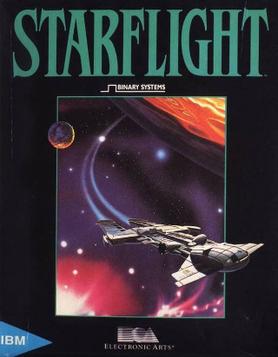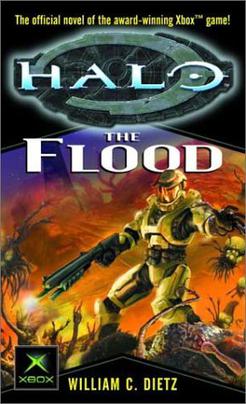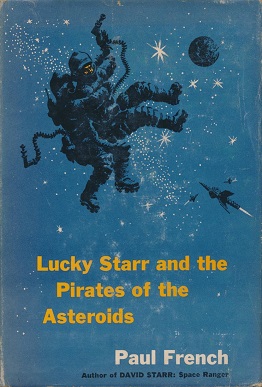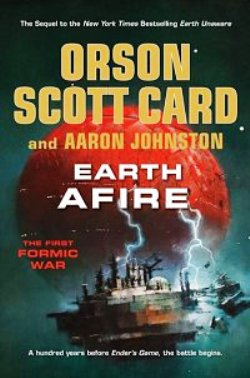Plot summary
After being forcibly divorced from his wife for political reasons, Spencer tries to force his way on board the ship she’s on. After being ejected, he gets drunk and implanted with a "feelgood" device that stimulates the pleasure centers of the brain. Spencer is saved from this addictive and lethal fate by an unknown Kona Tatsu (secret police) agent. They clean and care for him, then send him on a mission to the Daltgeld system.
Working with Agent Suss Nanahbuc, Spencer is given command of a task force and told that Kona Tatsu (KT) agents are disappearing from the planet. Upon arrival, the ``Duncan`` splashes down to dock for repairs, and Nanahbuc heads out to learn the fate of the other agents.
While docked, Spencer gets a visit from McCain, a KT agent hiding from the enemy. However, the enemy is aboard and kills McCain before they can analyze the data she found. The enemy turns out to be a small mercury-like blob that seems to react to its environment, weighs 16 tons, and can control the devices it infects. Spencer leaves the ship and closes it down tight, but it’s already too late.
In the end, it turns out an alien artifact was recently discovered in an asteroid, and the captain of the mining freighter was "convinced" to take the artifact to the head of a local conglomerate, Jameson. The device, a helmet made of a mercury-like substance, takes over Jameson and uses him as a control center for taking over the system, with plans to leave it and spread throughout the galaxy. After losing his flagship to prevent an alien from leaving the system, Spencer and Nanahbuc locate the main asteroid of the enemy and head in with the task force to put an end to it for good.

Starflight is a space exploration, combat, and trading role-playing video game created by Binary Systems and published by Electronic Arts in 1986. Originally developed for IBM PC compatibles, it was later ported to the Amiga, Atari ST, Macintosh, and Commodore 64. A fully revamped version of the game was released for the Sega Genesis in 1991.
The concept of self-replicating spacecraft, as envisioned by mathematician John von Neumann, has been described by futurists including physicist Michio Kaku and discussed across a wide breadth of hard science fiction novels and stories. Self-replicating probes are sometimes referred to as von Neumann probes. Self-replicating spacecraft would in some ways either mimic or echo the features of living organisms or viruses.

Taken, also known as Steven Spielberg Presents Taken, is an American science fiction miniseries that first aired on the Sci-Fi Channel from December 2 to 13, 2002. Filmed in Vancouver, British Columbia, Canada, it was written by Leslie Bohem, and directed by Breck Eisner, Félix Enríquez Alcalá, John Fawcett, Tobe Hooper, Jeremy Paul Kagan, Michael Katleman, Sergio Mimica-Gezzan, Bryan Spicer, Jeff Woolnough, and Thomas J. Wright. The executive producers were Leslie Bohem and Steven Spielberg.

Halo: The Flood is a military science fiction novel by William C. Dietz, based on the Halo series of video games and based specifically on the 2001 video game Halo: Combat Evolved, the first game in the series. The book was released in April 2003 and is the second Halo novel. Closely depicting the events of the game, The Flood begins with the escape of a human ship Pillar of Autumn from enemy aliens known as the Covenant. When the Pillar of Autumn unexpectedly discovers a massive artifact known as "Halo", the humans must square off against the Covenant and a second terrifying force in a desperate attempt to uncover Halo's secrets and stay alive. Though the book roughly follows the same events of the Xbox game, featuring identical dialogue, Dietz also describes events not seen by the game's protagonist, the super-soldier Master Chief.

Lucky Starr and the Pirates of the Asteroids is the second novel in the Lucky Starr series, six juvenile science fiction novels by Isaac Asimov that originally appeared under the pseudonym Paul French. The novel was first published by Doubleday & Company in November 1953.

Bloom, written in 1998, is the fifth science fiction novel written by Wil McCarthy. It was first released as a hardcover in September 1998. Almost a year later, in August 1999, its first mass market edition was published. An ebook reprint was published in 2011.

Sins of a Solar Empire is a 2008 science fiction real-time strategy video game developed by Ironclad Games and published by Stardock Entertainment for Microsoft Windows operating systems. It is a real-time strategy (RTS) game that incorporates some elements from 4X games; its makers describe it as "RT4X". Players are given control of a spacefaring empire in the distant future, and are tasked with conquering star systems using military, economic and diplomatic means.
The fictional portrayal of the Solar System has often included planets, moons, and other celestial objects which do not actually exist in reality. Some of these objects were, at one time, seriously considered as hypothetical planets which were either thought to have been observed, or were hypothesized to be orbiting the Sun in order to explain certain celestial phenomena. Often such objects continued to be used in literature long after the hypotheses upon which they were based had been abandoned.
Star Command is a 1996 television film written by Melinda M. Snodgrass and directed by Jim Johnston, which was originally intended as a television pilot produced by Paramount Television for UPN.
Death or Glory is a science fiction novel by Vladimir Vasilyev, first published in Russian in 1998, then translated into English in 2004 by Capricorn Publishing. The first part of Death or Glory may be read online.

Kiloblaster is a fixed shooter video game trilogy written by Allen Pilgrim and published by Epic MegaGames in 1992 for IBM PC compatibles. Based on Namco's Galaxian from 1979, there are a few differences such as allowing greater player movement, much faster enemy movement, power-ups, enemies that take more than one hit, and allies to assist in battle.

Fragile Allegiance is an open-ended 4X real-time strategy (RTS) game from Gremlin Interactive, released in 1996 for MS-DOS and Windows 95. The game begins on May 25, 2496, as the player begins their employment with TetraCorp who have set up a new asteroid mining franchise operation in the Fragmented Sectors. There are six alien races competing with Tetracorp for these resources. Beginning with one building and one million credits, the player is tasked with building up a successful mining operation to sell as much ore as possible to the Federation. Diplomacy is crucial to the success or failure of this franchise operation as the players' colonies begin to encroach on one another.
Heritage Trilogy is a series of military science fiction books written by Ian Douglas that focus on the United States Marine Corps. It is followed by the Legacy Trilogy and the Inheritance Trilogy.

Star Trek: 25th Anniversary is a 1992 Game Boy video game developed by Visual Concepts and published by Ultra, based upon the Star Trek universe. The game chronicles a mission of James T. Kirk and his crew of the USS Enterprise. Despite having the same name, the Game Boy version is not a port of the NES game or computer versions, and is in fact a completely different game. It was succeeded by Star Trek: The Next Generation for Game Boy, developed and published by Absolute Entertainment the following year.

Earth Afire is a science fiction novel by American writers Orson Scott Card and Aaron Johnston, and the second book of the Formic Wars novels in the Ender's Game series. It was nominated for the Goodreads Choice Award for science fiction.

The Wailing Asteroid is a science-fiction novel written by Murray Leinster and first published in 1960 by Avon Books. It presents the theme of the lone inventor who saves Earth from cosmic danger and introduces Humanity to an unknown civilization. The novel was adapted for film as The Terrornauts in 1967.
A self-replicating machine is a type of autonomous robot that is capable of reproducing itself autonomously using raw materials found in the environment, thus exhibiting self-replication in a way analogous to that found in nature. Such machines are often featured in works of science fiction.









